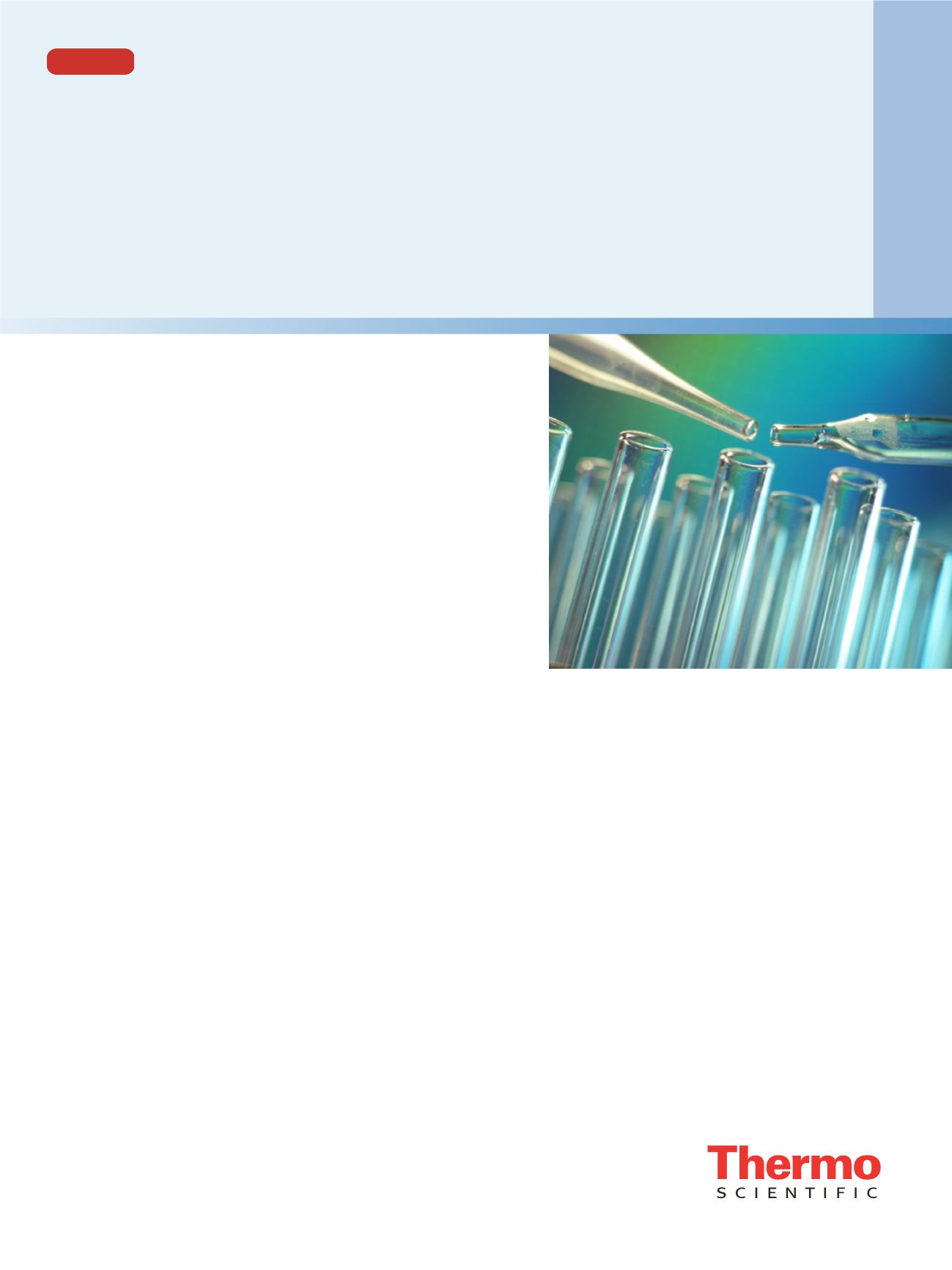

Selected-Reaction Monitoring–Mass
Spectrometric Immunoassay Analysis of
Parathyroid Hormone and Related Variants
Mary F. Lopez, Taha Rezai, David A. Sarracino, Amol Prakash, Bryan Krastins
Thermo Fisher Scientific BRIMS Center, Cambridge, MA
Application Note
MSIA1004
Key Words
LTQ Orbitrap XL, TSQ Vantage, Pinpoint Software, parathyroid hormone,
PTH, biomarkers, MSIA
Goal
To develop a highly sensitive and selective selected-reaction monitoring–
mass spectrometric immunoassay analysis (SRM-MSIA)-based method
for the concurrent detection and quantification of full-length parathyroid
hormone (PTH) [amino acid (aa)1–84] and two N-terminal variants [aa7–84
and aa34–84] for clinical research use.
Introduction
Parathyroid hormone is produced in the parathyroid
glands through the two-step conversion of prepro-PTH
(115 amino acids) to pro-PTH (90 amino acids) to the
84 amino acid peptide (PTH1–84). Conventional PTH
measurements typically rely on two-antibody recognition
systems coupled to a variety of detection modalities.
1
The most specific modalities are able to differentiate
between different truncated forms of PTH and are
referred to as second- and third-generation PTH assays.
2
The key to the application of these later-generation assays
is the ability to selectively detect and quantify various
PTH forms. In particular, two variants are the subject of
increased research investigation: full-length PTH1–84 and
PTH missing the 6 N-terminal amino acids (PTH7–84).
Because of the inability of existing tests to detect
microheterogeneity,
3
these variants were historically
considered as a single PTH value (by the first-generation
assays). The classification of each variant as its own
molecular entity, and the analysis of each independently,
suggest an antagonistic relationship between the two
different forms in regard to calcium homeostasis.
4
In fact,
there is mounting research showing that the ratio between
PTH1–84 and PTH7–84 could have future clinical
relevance for distinguishing between hyper-parathyroid
bone turnover and adynamic bone disease.
5-7
The ratio of PTH1–84 to PTH7–84 is an example of the
potential utility of the microheterogeneity within the PTH
protein. Another PTH variant, PTH1–34, has been
identified as exhibiting biochemical activity comparable to
the full-length protein. There are indications that the
microheterogeneity of PTH has yet to be fully characterized,
challenging researchers’ efforts to determine the utility and/or
confounding effects on present-day methods. Accurate
examination of known PTH variants and the simultaneous
evaluation of other possible variants requires a degree of
analytical freedom that universally escapes conventional
methods. This work describes mass spectrometric
immunoassays that, although specifically designed for the
detection of PTH1–84 and PTH7–84, also facilitate the
simultaneous discovery and evaluation of further
microheterogeneity in PTH.



















